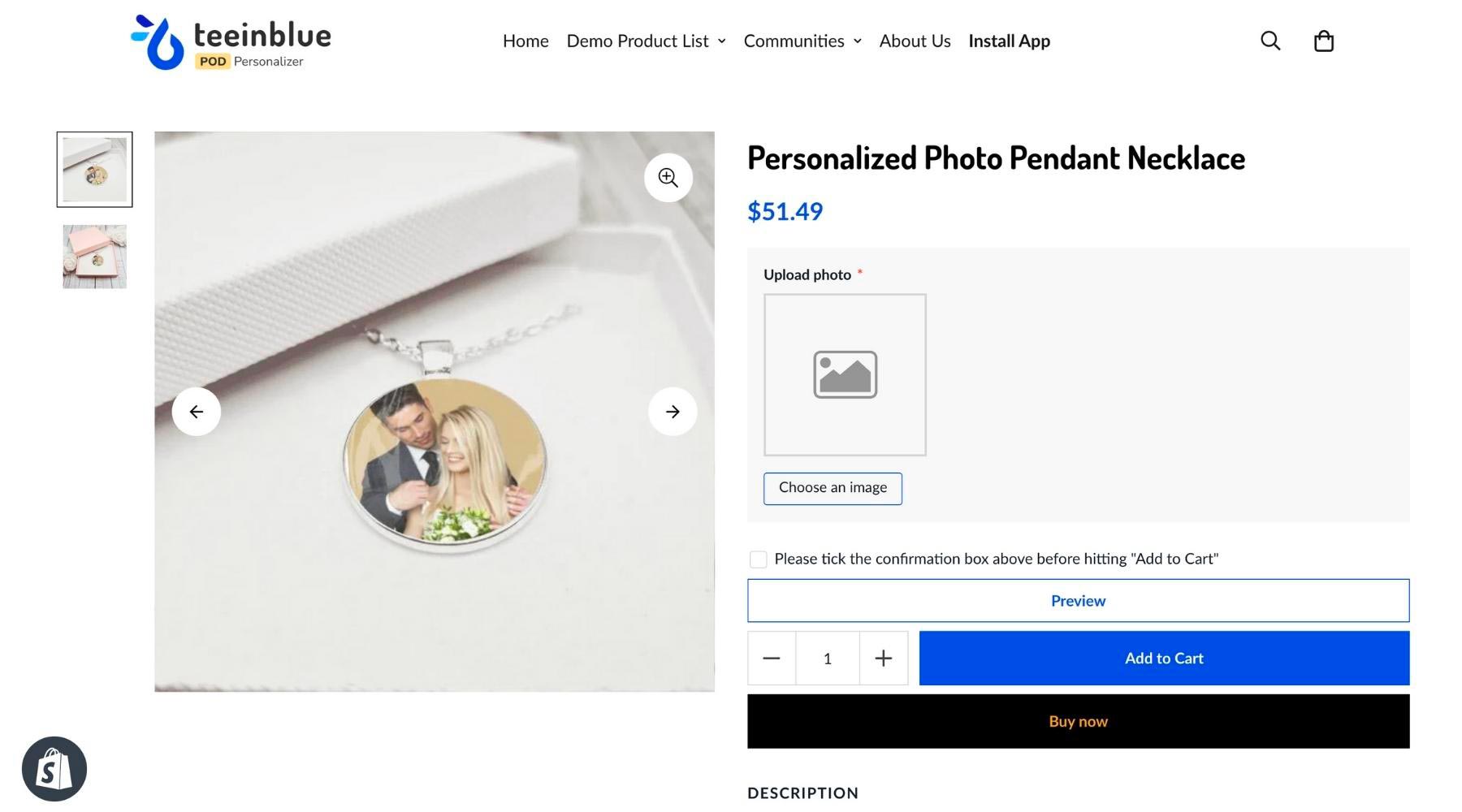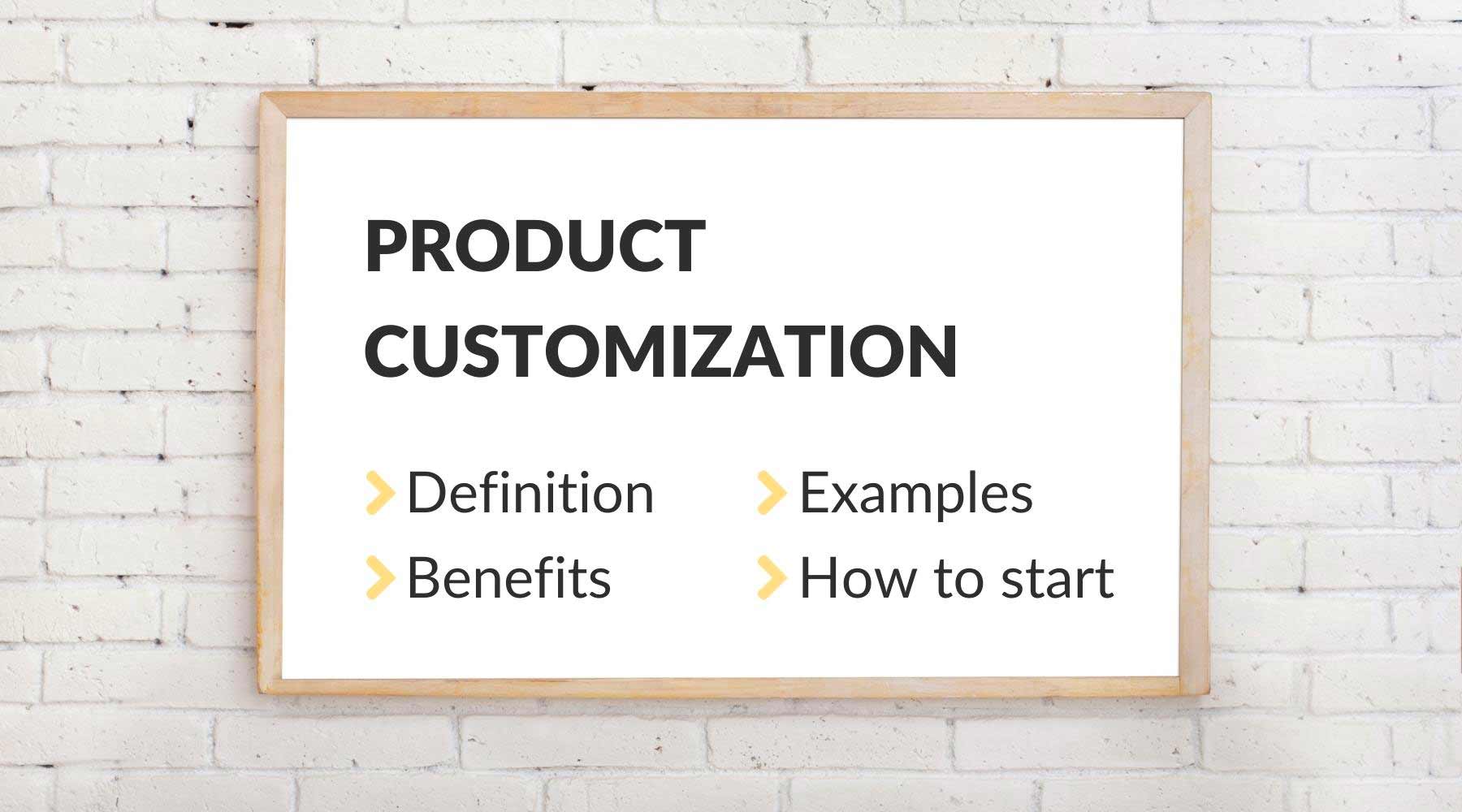Product Customization: What It is, Benefits, and Examples
-
Table of contents

Product customization enables customers to personalize or modify a product according to their preferences. Let’s delve into its remarkable benefits and inspiring examples to utilize its power and revolutionize your online store. Here you go!
What is Product Customization?
Product customization refers to the process of enabling customers to personalize a product according to their specific needs and preferences. It goes beyond mere selection from pre-designed options. It includes adding add-ons, exclusive functionalities, customizable colors, sizes, and variants.
You may be easily confused between the product customization definition and product personalization meaning. So, what is product personalization exactly? It is also a crucial aspect of delivering tailored products but on a deeper level. Product personalization serves as a powerful tool allowing customers to embellish their own text, photo, design template, etc., on the product.

A product with customized and personalized options
Merchants will need a product configuration app to make customized and personalized products. It is an interface or tool facilitating the creation and visualization of options to allow customers to personalize.
Customized and personalized products share many common benefits. And sellers frequently offer a combination of these options for a single product. As a result, it is unnecessary to strictly distinguish between the terms "customization" and "personalization" in this article.
5 Benefits of Customized Products
Not only does product customization cater to individual customer preferences, but it also significantly impacts your brand's success and profitability. Here are five key benefits of product customization.
- Offer the exact things your customer wants: With multiple options, buyers can purchase their dream item. Rather than providing a one-size-fits-all solution, let’s tailor your products to meet the needs of a specific segment.
- Enhance brand loyalty and retention: Creating emotional connections with customers helps your brand stay positive in their minds. They are more likely to return and buy more, earning you 5.7 times income.
- Generate more sales and profit: Most satisfied customers are willing to share their positive experiences, both through word-of-mouth and social media. This organic form of marketing enables your business to grow sustainably.
- Make products more valuable: Product customization adds uniqueness and exclusivity, elevating the perceived value of products. This differentiation allows you to charge premium prices and increase profit margins.
- Streamline the sales process: Reducing decision-making complexities leads to faster and more efficient sales cycles. Therefore, you can enhance customer experience and overall operational efficiency.

Product Customization Example for Online Stores
Let's explore seven compelling product customization examples that showcase what it exactly is.
Personalized Home Decor
Personalized home decor items like canvases should include customization options such as choosing artwork templates, uploading personal photos, adding names or quotes, and selecting different sizes and framing options. Other items in this category that are excellent to personalize include photo frames, decorative pillows, and wall decals.
Custom Clothing Products
For example, you can provide T-shirt options for fabric, colors, sizes, messages, and clipart. Among multiple styles, monogrammed and all-over-print t-shirts are leading the trend. Don’t forget to offer custom hoodies, embroidered hats, personalized tote bags, etc., to offer a complete purchasing journey.

Drinkware Customization
Creating drinkware customization, like coffee mugs, is not too complex. You are free to provide sizes, materials, shapes, clipart, or text personalization. The most important to take notice of is the mug’s print area. You should ensure the design is in the right position.
Jewelry Personalization
To sell personalized jewelry gifts, such as necklaces, consider adding options like pendant shapes, birthstones, engraving names or messages, and chain lengths or styles. Besides necklaces, you can easily find more examples of product customization for other jewelry pieces. You just need to search for “customized bracelets, earrings, or rings” on marketplaces like Etsy, Amazon, or eBay.

Customized Pet Items
The best-selling customized pet items allow customers to add pet names, select colors or patterns, and incorporate personalized pet-related graphics. Tailor-made pet bowls, tags, beds, and clothing will help you easily start an online store with product customization.
Bespoke Tech and Accessories
Offering customizable phone cases brings the highest profit margin. Let your purchasers choose from a range of materials, colors, and patterns, and even add personalized text or images. Additional personalized products that are high potential are laptop sleeves, tablet covers, and smartwatch bands.

Automotive Customization
From luxury automobiles to small accessories, the realm of personalization knows no bounds. Take Nissan, for instance, which empowers customers to create their dream car by choosing their preferred exterior color, interior options, and advanced technology packages. Embracing innovative product customization and personalization brings an extraordinary online shopping experience beyond expectations.
💡 You may concern: Top-trending Print-on-demand Ideas for Products and Designs
How to Customize Products? Best Practices
By understanding customer personas, creating tailored products, and building a complete customer journey, online merchants can provide personalized products that resonate with your target audience.
Understand Customer Personas
Product customization requires understanding customer needs and preferences to provide tailored choices with higher engagement and satisfaction. To understand customer personas, sellers can follow these steps:
- Collect and analyze customer data: Gather information about customer demographics, behaviors, and preferences through surveys, interviews, and analytics tools.
- Identify common patterns: Look for similarities and trends among customer groups to create distinct products representing different target audience segments.
- Define persona attributes: Develop detailed profiles for each persona, including demographic information, goals, motivations, pain points, and preferred customization options.
- Use personas to inform decision-making: Utilize the personas as a reference when developing customizable products, designing marketing campaigns, and improving customer experiences.
The outcome is a list of key features and attributes of product customization. You should ensure you will add which options for colors, sizes, materials, or design elements.

Create Customizable Products
The next step is to design, add customizable options, and display the product well on the online store. Save these platforms and tools to streamline this process:
- Online Store Platforms: Selling customized products on Shopify a is top-rated choice. These platforms provide custom themes, plugins, and apps to integrate customization options seamlessly.
- Design Software: Graphic design tools like Adobe Photoshop, Canva, or Sketch can be used to create resources for product customization like graphics, clipart, or patterns.
- Product Configurators: Tools like Teeinblue product customizer and Product variants options allow you to add various colors, sizes, materials, and design elements.
- Product Mockup Generators: Placeit, Smartmockups, or Mockup World help you generate realistic product mockups that display customized designs or personalizations on various products.
Build a Complete Buying Journey
A complete customer journey that integrates personalization at every touchpoint can significantly enhance the overall customer experience. Create a cohesive and seamless interaction from pre-purchase to post-purchase within the five steps below:
- Map the customer journey: Identify key touchpoints and interactions throughout the customer's buying process, including pre-purchase, purchase, and post-purchase stages.
- Personalize pre-purchase experiences: Tailor marketing messages, product recommendations, and website content based on customer preferences and previous interactions.
- Enable personalized product selection: Offer customization options on the product page, allowing customers to choose specific features, colors, sizes, or materials.
- Provide post-purchase personalization: Offer personalized order tracking, targeted recommendations, and support services to ensure a seamless post-purchase experience.
- Leverage customer data: Utilize customer data and insights to continuously improve and optimize the customer journey, identifying opportunities for further personalization and customization.

Carefully prepare before launching your customized products
Tips: If you produce custom products yourself with an in-house factory, consider enhancing your brand awareness with custom packages. You can produce these yourself or, to save on investment and effort, use third-party services like Arka.
Frequently Asked Questions
What is the Importance of Product Customization?
Product customization plays a crucial role as it empowers customers to actively participate in the product development process. By enabling them to select desired features, colors, and styles, it creates a personalized experience that makes them feel special and valued. Then, it generates more sales and supports sustainable growth.
How Fast is Personalized Products Growth Rate?
The market for personalized gifts is projected to experience a compound annual growth rate (CAGR) of 7.85% from 2022 to 2027, with an expected market size expansion of USD 13,011.27 million. The most profitable businesses are 3D-printed customized gift stores and private-label brands.
What is the Best Way to Start Product Customization?
To initiate product customization effectively, follow these steps:
- Step 1: Determine your target custom products for selling.
- Step 2: Focus on creating compelling designs as the core of customization.
- Step 3: Select the suitable approach to enable customization in your e-commerce platform.
- Step 4: Optimize and streamline your print operations for enhanced efficiency.
Try Teeinblue Product Personalizer – the Shopify cutting-edge app specialized for print-on-demand product personalization! With its user-friendly interface, advanced design tools, seamless API integration, and efficient support, Teeinblue helps you save 50% effort in designing, adding personalization options, and selling personalized POD products. Let’s discover more about this product configurator through the video below!
Product customization has revolutionized the e-commerce landscape, providing a transformative impact. By offering personalized experiences, you can cater to customers' unique preferences and needs, fostering stronger connections and brand loyalty. By implementing effective strategies, leveraging appropriate tools, and gaining insights into customer personas, you can differentiate your store and embark on a path to remarkable success.
RELEVANT ARTICLES
What is Print-on-demand - The Simplest Explanation You Need
Start a Print-on-demand Business With a Product Personalization Approach
The Ultimate Guide to Customizing and Selling Products Online
Best Shopify Product Personalizer for Print-on-demand Merchants
Newsletters
Subscribe to get exclusive POD tips, trends, and insights!
Tags:
product personalization
